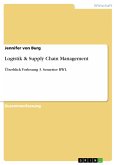Seminar paper from the year 2005 in the subject Business economics - Supply, Production, Logistics, grade: 1,0, European Business School - International University Schloß Reichartshausen Oestrich-Winkel, language: English, abstract: The stunning success of Japanese corporations during the last decades has raised several questions and drawn profound interest for this topic in the academic literature. It has been argued by several researchers that an important part of the Japanese competitive advantage stems from its supply base that is actively managed as an extension of the enterprise. As the face of global competition changes from inter-firm to intercoalition competition taking place between whole supply chains, effective management of value chain partnerships has become a critical success factor. In contrast to Western corporations, which rely heavily on either arm’s length market transactions or vertically integrated hierarchies, hybrid governance structures in the form of inter-organizational Keiretsu business groups play a dominant role in Japan. In complex-product industries Keiretsu business groups account for a major share of Japanese competitive advantage: they foster mutual trust, specialization, information sharing and low transaction costs. Despite these advantages and the impressive track record, the historically grown Keiretsu structure is forced to adapt to changing market circumstances and undergoing a transformation. This article seeks to shed some light on the evolution of Keiretsu, assess its strengths and weaknesses and depict recent challenges and developments.
Bitte wählen Sie Ihr Anliegen aus.
Rechnungen
Retourenschein anfordern
Bestellstatus
Storno









